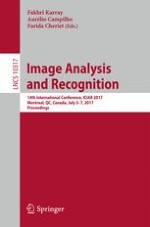This book constitutes the thoroughly refereed proceedings of the 14th International Conference on Image Analysis and Recognition, ICIAR 2017, held in Montreal, QC, Canada, in July 2017.
The 73 revised full papers presented were carefully reviewed and selected from 133 submissions. The papers are organized in the following topical sections: machine learning in image recognition; machine learning for medical image computing; image enhancement and reconstruction; image segmentation; motion and tracking; 3D computer vision; feature extraction; detection and classification; biomedical image analysis; image analysis in ophthalmology; remote sensing; applications.
